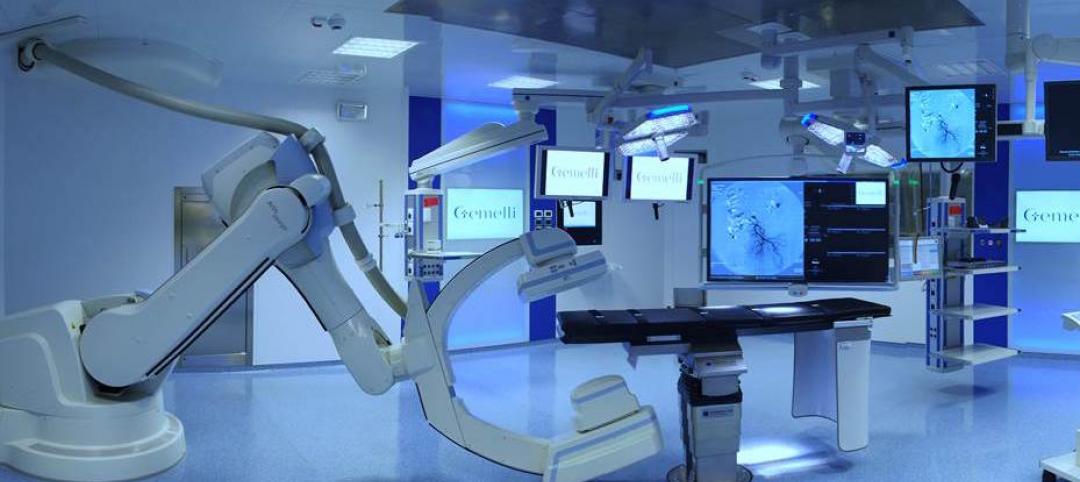As the healthcare system grows, securing these facilities becomes ever more challenging. Increasingly, medical providers have multiple facilities within their networks, making traditional keying systems and credentialing impractical.
Expensive wired access control for select high-security doors combined with old-fashioned keyed locks was a step in the evolution of facility security, but this provided very little visibility into who used those doors. Replacing traditional keyed doors with wireless access was the natural outgrowth of this inefficient, hybrid solution.
Kyle Pfeiffer, Industry Solutions Leader—Healthcare of SALTO Systems, notes, “Security remains at the forefront of decision-making in healthcare, driving technology for access control to evolve. By integrating keyless entry into an existing infrastructure, healthcare professionals are better equipped to control the flow of people entering or exiting the premises without impairing efficient movement.”
Physical Keys: Impractical and Expensive
While high-security areas may require wired electronic systems, there still exists the problem of physical locks and keys on all the other doors. Pfeiffer says, “Most offices within medical facilities are still using mechanical keys, which is not an effective way to secure or protect information in those areas.”
Moreover, managing physical keys is costly. He cites the example of doctors checking into a working suite at the hospital for an extended time period. “They hardly ever return the suite’s physical keys when checking out. Those locks then need to be replaced for security purposes,” he says, which is an expensive undertaking. “Doors that use physical keys and locks can cost facilities up to six figures each year just to manage and replace them.”
However, the smart technology used with wireless access allows for a quick and easy credential change made by a security administrator when the physician leaves, without requiring that the lock itself be switched out.
Pfeiffer notes that installing wire-free locks like those in SALTO’s Virtual Network (SVN) is an easy and cost-efficient alternative to mechanical keying systems. “They don’t require running wires and are easy and inexpensive to install. Replacing mechanical locks with SVN technology is an investment that pays for itself in less than a year and provides significant savings every year thereafter.”
The Benefits of Wireless Access Control
A major benefit of keyless access control is that all doors are managed on a single system, without the problems of handling different types of locks and multiple credentials. This allows for efficient management of foot traffic and identification of unwanted visitors.
Staff members also benefit. Medical professionals have access to different areas, floors, buildings and offices without fumbling around with multiple physical keys or managing different credentials. Being able to add more keyless entry points also makes matters easier for security and IT staff, while providing them with increased visibility into access data. They also have the ability to quickly manage an urgent situation or change staff credentials.
Finally, a keyless access system like SVN allows for the growth of medical systems. As large healthcare complexes add clinics, buildings and locations, wireless access control manages both interior and exterior doors on a single system, saving money while increasing security and convenience.
The Future of Wireless Access Control
Pfeiffer observes, “Within any healthcare facility, leadership has the responsibility to regulate areas where patient records are kept. Keyless systems improve security, thereby ensuring compliance and patient privacy.”
Maintaining these high standards in order to meet regulatory standards like HIPAA will continue to drive the technology of wireless access control. Its future in healthcare security not only brings with it the benefits of meeting patient privacy needs, but also provides significant cost control and scalability for future growth.
Related Stories
Healthcare Facilities | Jul 20, 2016
Process mapping simplifies healthcare design
Charting procedures and highlighting improvement opportunities can lead to developing effective design strategy simulations. GS&P’s Ray Wong writes that process mapping adds value to a project and bolsters team and stakeholder collaboration.
Sponsored | Building Technology | Jul 11, 2016
3D scanning technology solves University of Iowa Children’s Hospital’s curved wall curveball
Gilbane Building Company utilized advanced 3D scanning technology as part of a virtual design and construction (VDC) solution to ensure quality control throughout the lifespan of the project
Healthcare Facilities | Jul 7, 2016
How to navigate the tedious regulatory approval process in healthcare construction
Compliance processes can be handled efficiently with a little bit of foresight. CBRE's Patrick Duke, Kyle Marden, and David Vollmer evaluate the regulations and permits that may be required and the process for incorporating approvals into projects.
Healthcare Facilities | Jul 1, 2016
AIA releases summary of the 2016 Design and Health Research Consortium
Consortium members discussed how architects, designers, and health professionals can best apply design and health research in their communities.
Healthcare Facilities | Jun 19, 2016
Rapid growth of retail health clinics presents new choices for consumers, payers, and providers
Service expansions help dealers boost clinics’ profitability.
Healthcare Facilities | Jun 10, 2016
Top 10 health technology hazards include some influenced by space design
ECRI Institute’s annual list includes operational and workflow issues.
Healthcare Facilities | May 30, 2016
CBRE finds that investors are still flocking to healthcare sector
Over the past year, healthcare accounted for nearly one-fifth of all new jobs in the U.S.
Big Data | May 27, 2016
Analytics alone won't save money for healthcare facility owners
Advanced technology provides insight into the actions necessary to cut costs, but it's the people, processes, and implementation that make a difference with analytics, writes CBRE's Paul Oswald.
Hospital Design Trends | May 19, 2016
CannonDesign releases new white paper on advancements in operating room environments
"Surgical Suites: Emerging Approaches to Planning and Design" offers solutions for collaboration and technology integration.
Healthcare Facilities | May 6, 2016
Infographic: The greening of healthcare
By adopting green building and sustainable practices, healthcare facilities can save $15 billion over 10 years. Skanska's infographic spells it all out.
















